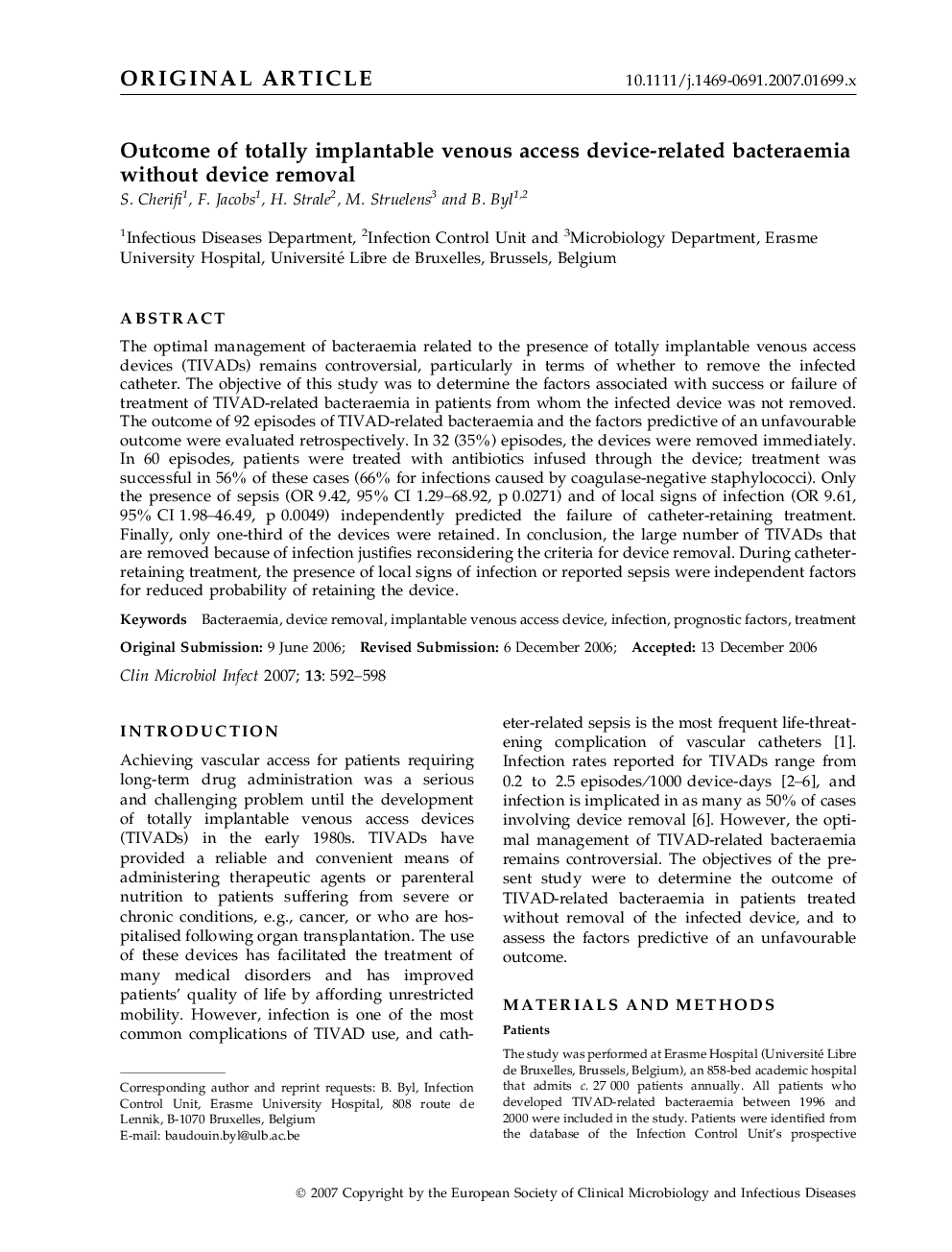| Article ID | Journal | Published Year | Pages | File Type |
|---|---|---|---|---|
| 3398091 | Clinical Microbiology and Infection | 2007 | 7 Pages |
ABSTRACTThe optimal management of bacteraemia related to the presence of totally implantable venous access devices (TIVADs) remains controversial, particularly in terms of whether to remove the infected catheter. The objective of this study was to determine the factors associated with success or failure of treatment of TIVAD-related bacteraemia in patients from whom the infected device was not removed. The outcome of 92 episodes of TIVAD-related bacteraemia and the factors predictive of an unfavourable outcome were evaluated retrospectively. In 32 (35%) episodes, the devices were removed immediately. In 60 episodes, patients were treated with antibiotics infused through the device; treatment was successful in 56% of these cases (66% for infections caused by coagulase-negative staphylococci). Only the presence of sepsis (OR 9.42, 95% CI 1.29–68.92, p 0.0271) and of local signs of infection (OR 9.61, 95% CI 1.98–46.49, p 0.0049) independently predicted the failure of catheter-retaining treatment. Finally, only one-third of the devices were retained. In conclusion, the large number of TIVADs that are removed because of infection justifies reconsidering the criteria for device removal. During catheter-retaining treatment, the presence of local signs of infection or reported sepsis were independent factors for reduced probability of retaining the device.
